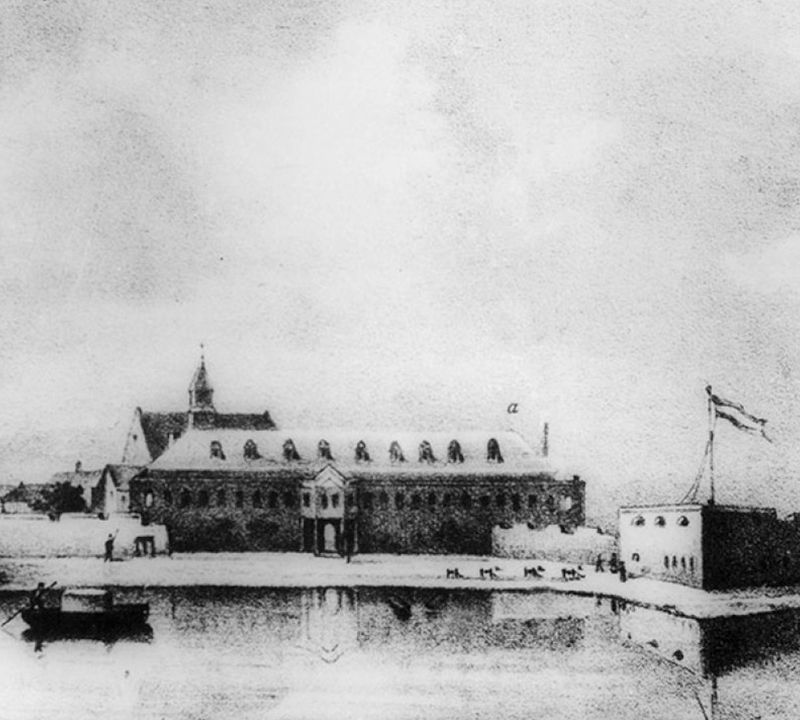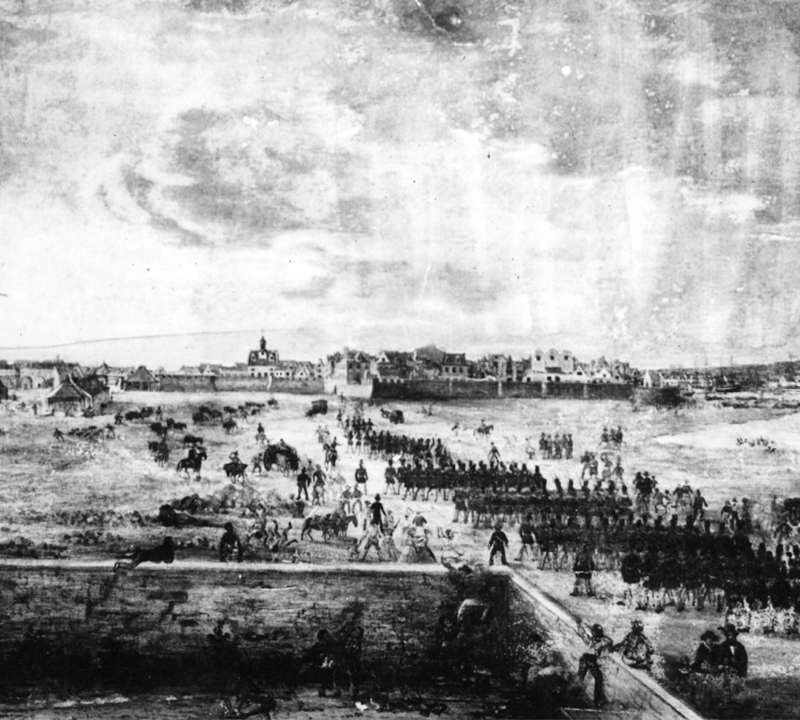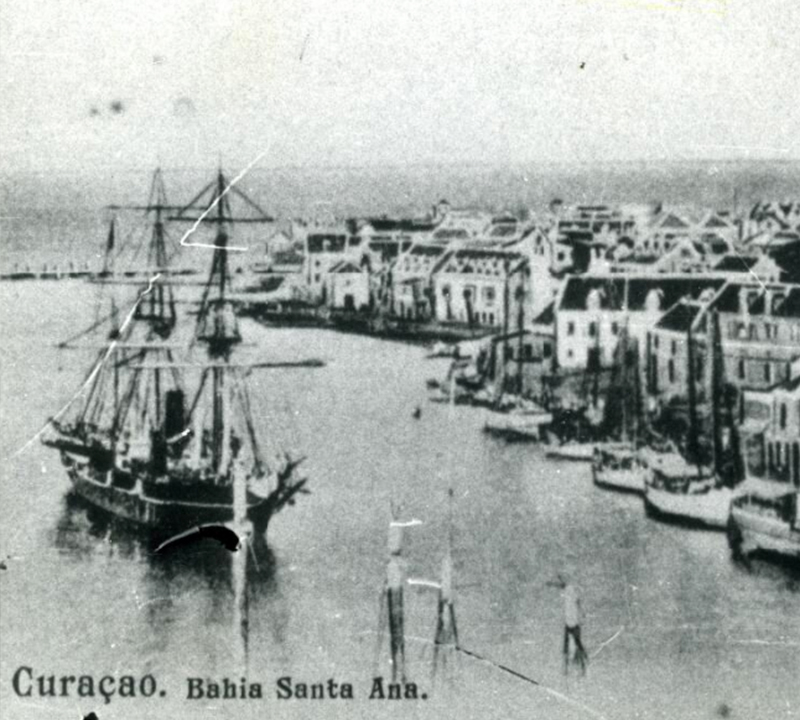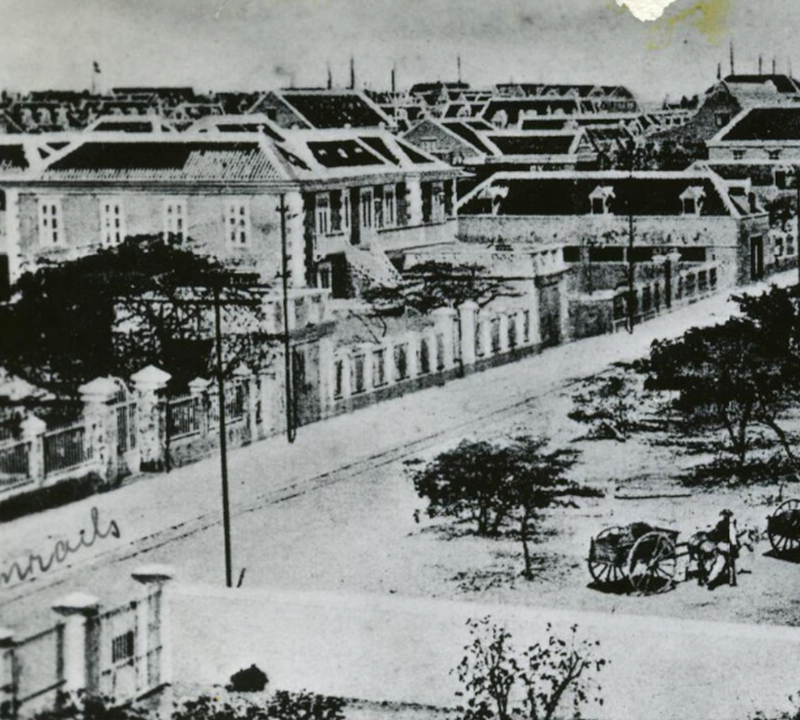In 1634, at the time of the conquest by the Dutch on the Spanish of the island of Curaçao, "De Punt" (Punda) was no more than a flat surface, a peninsula of 7 acres, covered with cactuses and shrubs.
The Construction of Fort Amsterdam began in March 1635. With the establishment of a government and garrison there, it became the most important place in Curaçao.
Merchants, many of them Jewish settlers, started to build their warehouses north of Fort Amsterdam from 1664 onwards. The big boost for the city came after the Dutch declared the harbor an “open harbor” in 1675. That was after the dissolution of the First West India Company (WIC) and at the establishment of the second WIC. Willemstad was open for every country or individual to buy and sell products and … slaves. The first slave ship, the “Bontekoe," entered the “St. Annabaai” (Saint Anna Bay) in 1657 with 191 Africans on board. In the mid-sixties of the 17th century, a steady stream of slave ships arrived. Willemstad developed into a transit port. In 1717 a number of 135 slaves were kept in the city, behind the Fort. The city had 214 constructions at that time. City walls were erected from the Fort to “Waaigat” (the inner harbor) after 1675. They were demolished in the years 1861 to1864, due to the rapid growth of the population.





